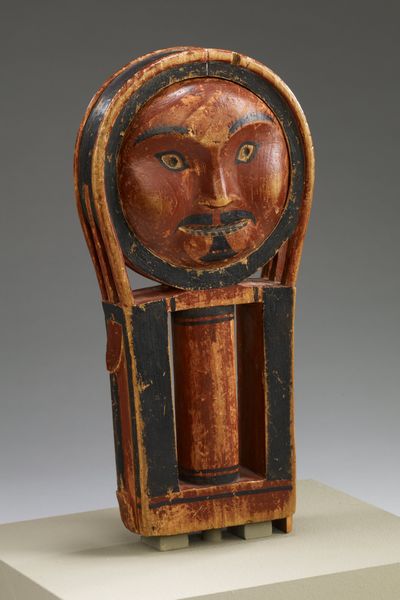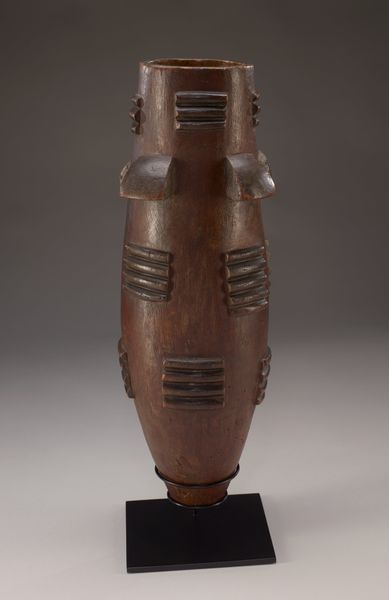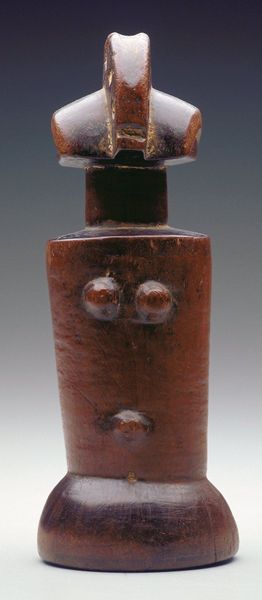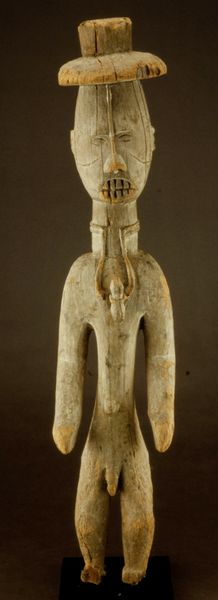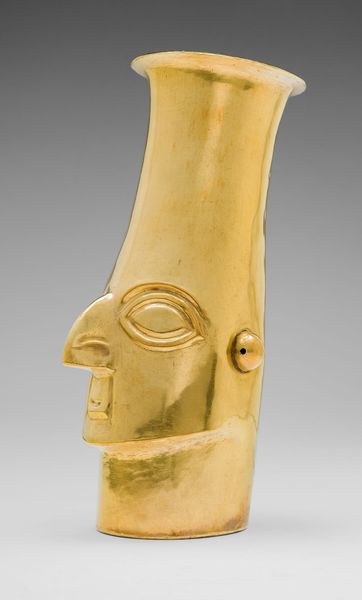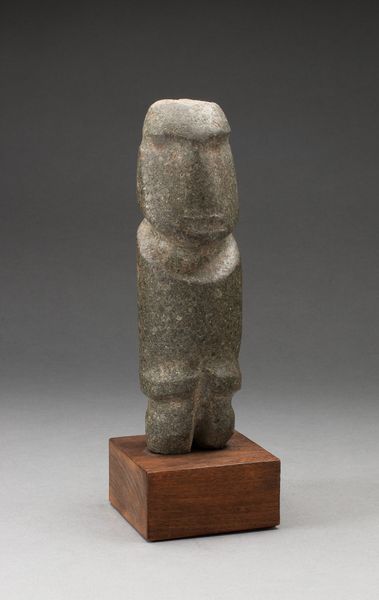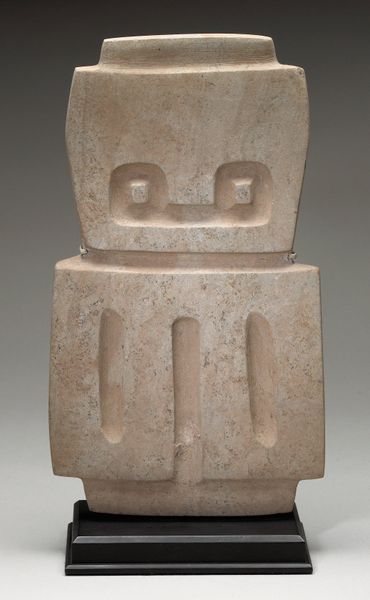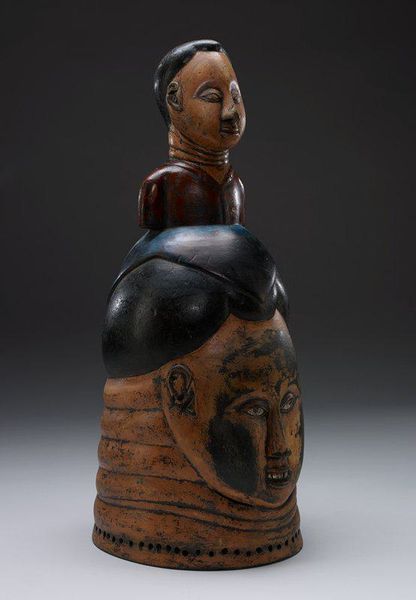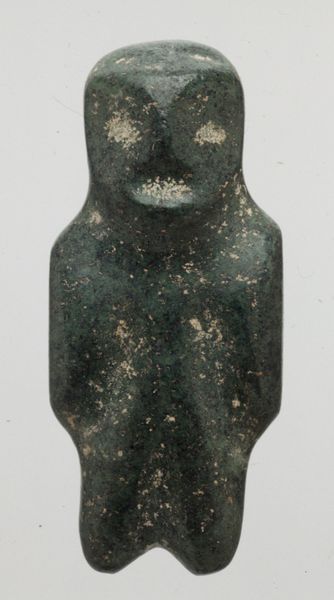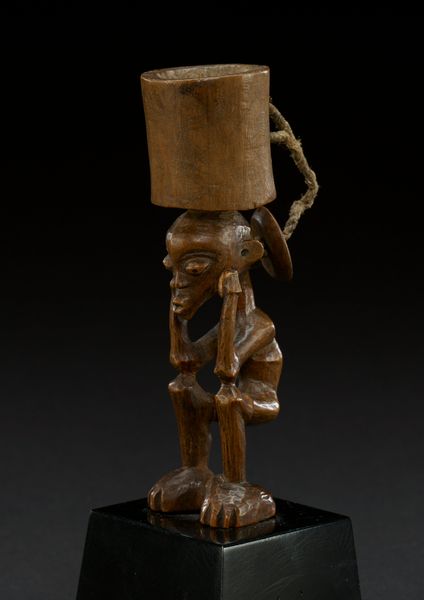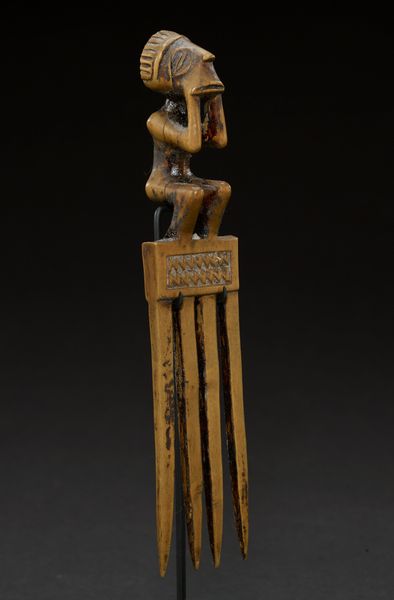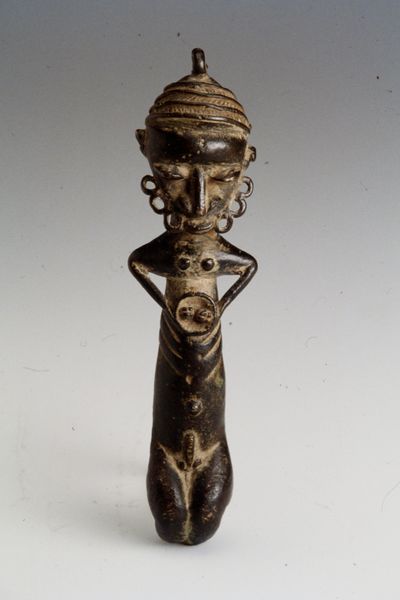
carving, sculpture, wood
#
carving
#
figuration
#
sculpture
#
ceramic
#
wood
#
indigenous-americas
Dimensions: 5 3/4 x 2 x 13/16 in. (14.61 x 5.08 x 2.06 cm)
Copyright: Public Domain
This snuff tablet was carved by the Tiwanaku people, used for the ritual consumption of psychoactive substances. The figure at the top is adorned with a headpiece featuring a cross-like motif. The cross, in its myriad forms, echoes through time. In early Christian iconography, it represents sacrifice and redemption, but long before Christianity, the cross appeared in various cultures, symbolizing cosmic order and the meeting point of divine and earthly realms. Notice the geometric forms, repeated and abstracted into patterns; they seem to resonate with a primal, almost subconscious understanding of order and structure. The act of taking snuff itself becomes a symbolic gesture, a seeking of transcendence or connection with the divine, made tangible through this meticulously carved object. The emotions it evokes, the yearning for something beyond our ordinary existence, is a powerful force that transcends cultural boundaries. This tablet then is not merely an artifact, but a point of connection to a timeless quest for understanding.
Comments
minneapolisinstituteofart almost 2 years ago
⋮
Tiwanaku was a powerful pre-Inka state centered on the southern shore of Lake Titicaca, near the border of today’s Peru and Bolivia. At its height from 600-1000, an elite class of merchants traded in alpaca wool and used their amassed wealth to commission buildings, monuments, and personal objects to reflect their status. Hallucinogenic plants were pulverized into snuff on tablets like this one and taken to combat illness and fatigue and during religious ceremonies. This snuff tablet is topped by an image of a high status member of Tiwanaku society, indicated by his patterned hat and tunic. Centuries later in a ceremony preceding his 2006 inauguration, Bolivian president Evo Morales appeared wearing a similar Tiwanaku-style hat and tunic. Morales’s choice of clothing communicated a strong message to his electorate. As the first president from the country’s indigenous majority, Morales wanted to associate his presidency with the past glory of Tiwanaku and show his allegiance to the Native population of Bolivia.
Join the conversation
Join millions of artists and users on Artera today and experience the ultimate creative platform.

